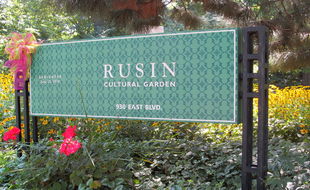Establishing Their Roots in America
Most scholars assume that heritage memorial gardens are made to display the culture of an ethnic group, however these memorials are created to describe how the ethnic group established their roots in America. The culture of an ethic group is an important aspect to their identity but their journey of assimilating to a new country also has an impact on how they continued to evolve as a whole. In this digital exhibit, I will argue that these memorials share the specific immigrant journey of each ethnic groups in order to legitimize their community in America.
This memorial garden presents key aspects of the Hungarian community's transition to America by commemorating important figures and using symbolism to present the values of their heritage. Bela Bartok is one of the busts in the memorial and he is remembered for his contributions to Hungary’s musical arts via composition of folk music. The Hungarian community’s first significant wave of immigrants is dated back to the 1890’s which was a prominent time in Bartok’s career. Endre Ady was a Hungarian poet and is the second bust in the memorial garden. He was dubbed “the conscience of the Hungarian nation” due to his complex poems which explored ideas considered taboo in his era. Ady also reached great heights in his career during the period of the first wave of Hungarian immigration to the U.S.
This memorial garden contains busts of various important figures that contributed important ideas or services to their community. This highlights the values and ideas brought by the Finnish to America and how they adjusted in order to assimilate their community to American culture. Jean Sibelius is a renowned Finnish composer and one of the busts in the Finnish memorial garden. Sibelius’s most prominent piece of work is “Finlandia” which is a patriotic piece that reflects the passion of the Finnish people to their homeland. The first wave of Finnish immigrants happened at the end of the 19th century which is also when Sibelius was reaching the peak of his artistic career. The correlation between the people chosen by the Finnish to commemorate in the memorial garden and the magnitude of the contribution made to the community correlates throughout all memorials. The people of the community value figures that have contributed to the humanities of their community and influenced how they would establish their roots in America. This is a prominent theme seen throughout the Finnish, Rusin and Hungarian memorial gardens.
Symbolism is a key aspect for the Rusin memorial garden. Despite the lack of a bust of a prominent figure to the community, the design of the memorial succeeds in reflecting the true values of the Rusin people. By being set on a wooden glade which slopes down to a lower boulevard, the difference in elevation level alludes to the Carpathian Mountains which are part of the homeland to many Rusins. The Carpathian walnut trees planted in the garden serves as an emblem of the Rusin people planting their roots in America.






